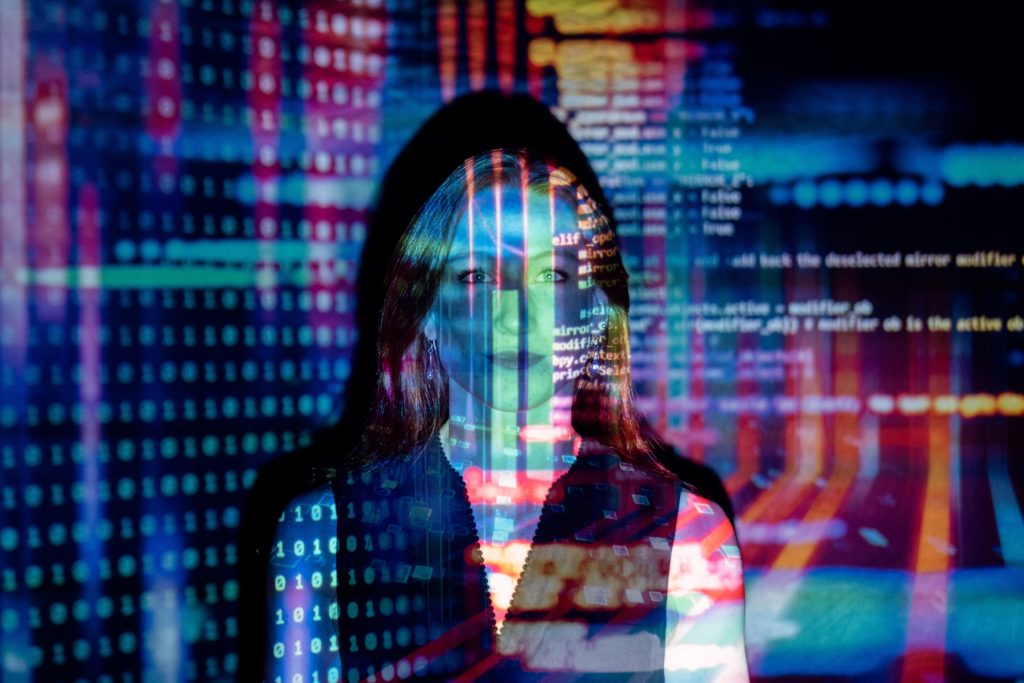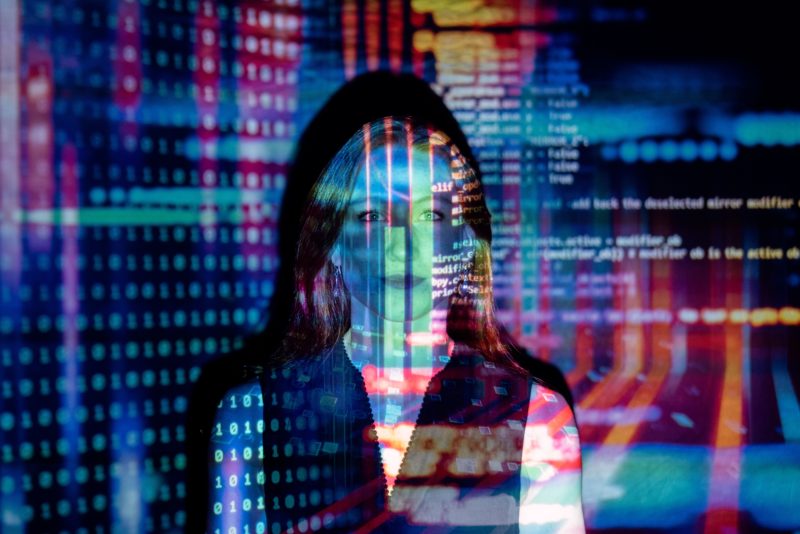Traditionally, an “inventor” in a patent application has been defined as a person who invented or discovered the subject matter of the invention. Until recently, it has not been necessary to consider whether a non-human entity could be considered an inventor. With the development of artificial intelligence based technology (“A.I.”), we need to consider the issue. If we have reached a point where A.I. could independently invent or create protectable IP, could such an A.I. be listed as an inventor?[1]
To date, several patent offices considering this issue have found that A.I. cannot be considered an inventor.[2] Two recent decisions may be showing a change in this trend.
In Stephen Thaler v Commissioner of Patents[3], the Federal Court of Australia is the latest to consider whether the definition of “inventor” excludes a non-human artificial intelligence. In a ground-breaking decision, the Australian Court found that a non-human “inventor” is not inconsistent with inventorship under Australian law.
More recently, South Africa issued a patent designating an A.I. system as the inventor. However, South Africa does not offer formal examination so the issue of whether A.I. systems are properly identified as inventors does not appear to have been considered.
It will be interesting to see what impact, if any, these decisions will have on Canadian patent law.
Stephen Thaler’s “Creativity Machine” DABUS
Both the Australian and South African cases involved the same patent application. In 2018, Dr. Stephen Thaler filed patent applications with the European Patent Office (“EPO”) and subsequent Patent Cooperation Treaty (“PCT”) applications, all designating an A.I. system called “DABUS” as the inventor.[4] Thaler is the owner, is responsible for and is the operator of the computer on which DABUS operates. Thaler stated that he had “acquired” the right to the inventions from the inventor by being its successor in title, arguing that as the machine’s owner, he was assigned any intellectual property rights created thereby.
The EPO, UKPO and USPTO all refused the applications on the basis that only natural persons can be named as inventors in a patent application.
The Australian Decisions
In Stephen Thaler v Commissioner of Patents, Australia’s Deputy Commissioner of Patents (the “Commissioner”) determined that the Australian patent application stemming from the PCT application, namely patent application no. AU2019363177[5] (the “‘177 Application”), did not comply with the Australian patent requirement that an applicant must provide the name of the inventor of the invention to which the application relates. As there was no human inventor, according to the Commissioner, the ‘177 Application could not proceed. Thaler then sought judicial review on the basis that the Australian patent regime did not preclude an A.I. being considered an inventor.
Can An A.I. Invent?
The underlying question was therefore whether an “inventor” includes an A.I. system for the purposes of the Australian Patent Act and Regulations.
The Commissioner took the position that the ordinary meaning of “inventor” indicates something inherently human, namely “someone who invents, especially one who devises some new process, appliance, machine or article; someone who makes [an] invention.” It is “…the human quality of ingenuity that resides in the notion of invention” which is fundamental to the meaning of “inventor”. An A.I. is more akin to a machine or device for making calculations and therefore not capable of such ingenuity.
According to the Australian Court, the effect of the Commissioner’s decision is that an A.I. system could invent something that satisfies all of the requirements of patentability (e.g. new, inventive and useful), but would not be patentable because the Australian Patent Act requires a human inventor. The logical conclusion, therefore, is that if there was patentable invention but no human inventor, you could not apply for a patent. This is the antithesis, in the Court’s view, of the objective of the Patent Act.
The Patent Office’s position also confuses the question of ownership with the question of who can be an inventor. While an A.I. system could not own a patent, this does not automatically preclude it from being an inventor. By failing to recognize A.I. as an inventor, the Commissioner has unnecessarily introduced limitations and qualifications not provided in the Australian Patent Act.
Applicability to Canadian Patent Law
Canadian courts have yet to explicitly consider whether an invention generated by a non-human is patentable, so it will be interesting to see how classical interpretations of patent law will be applied to non-human inventors.
Section 27 of the Canadian Patent Act provides that a patent shall be granted to “… the inventor or the inventor’s legal representative…”. Inventor, however, is not defined in the Canadian Patent Act. The Patent Act does not, on its face, restrict who can be an inventor. Canadian courts have found that the inventor is the person whose conception gives rise to the invention, and/or the person who sets the conception or discovery into a definite and practical shape.
Canadian courts have rejected the contention that mere calculation or testing bestows inventorship. It is clear, therefore, that an A.I. system used to calculate or analyze data in support of the inventive process is not an inventor, but merely a tool. The foregoing principle does not, however, rule out A.I. inventors; where the A.I.’s contribution extends to conception of the invention and/or its reduction to a definite and practical shape (e.g. humanlike ingenuity), such an AI system could rise to the level of an inventor.
Despite the lack of a statutory restriction on non-human inventors, the restrictions on inventor identity and the inventive process stated in the Canadian Patent Act, as interpreted by Canadian courts, make it unclear whether an invention derived from AI-based technologies would be granted patent protection. It will be interesting to see if the Australian and/or South African examples are persuasive in Canada.
Learn more about our patent practice.
[1] See our LinkedIn Pulse articles here
[2] See footnote 1
[3] Thaler v Commissioner of Patents [2021] FCA 879
[4] See WIPO PATENSCOPE record here. DABUS is an acronym for “Device for the autonomous bootstrapping of unified sentience”

L’intelligence artificielle comme « inventeur »? L’Australie et l’Afrique du Sud jugent le tout compatible avec le droit des brevets – 20 août 2021
Traditionnellement, dans une demande de brevet, un « inventeur » est défini comme une personne qui a inventé ou découvert l’objet de l’invention. Jusqu’à récemment, il n’était pas nécessaire de se demander si une entité non humaine pouvait être considérée comme un inventeur. Avec le développement de la technologie basée sur l’intelligence artificielle (IA), il devient nécessaire de se pencher sur la question suivante : Si nous avons atteint un point où l’IA pourrait inventer ou créer de manière indépendante une propriété intellectuelle protégeable, une telle IA pourrait-elle être désignée comme un inventeur[1]?
Jusqu’à présent, plusieurs bureaux de brevets qui se sont penchés sur cette question ont conclu que l’IA ne pouvait pas être considérée comme un inventeur[2]. Deux décisions récentes laissent entrevoir un changement dans cette tendance.
Dans l’affaire Stephen Thaler v. Commissioner of Patents[3], la Cour fédérale d’Australie est la dernière à se pencher sur la question de savoir si la définition d’« inventeur » exclut une intelligence artificielle non humaine. Dans une décision sans précédent, le tribunal australien a estimé qu’un « inventeur » non humain n’est pas incompatible avec le titre d’inventeur en droit australien.
Plus récemment, l’Afrique du Sud a quant à elle délivré un brevet désignant un système d’IA comme inventeur. Toutefois, l’Afrique du Sud ne propose pas d’examen formel, de sorte que la question de savoir si les systèmes d’IA sont correctement désignés comme inventeurs ne semble pas avoir été examinée.
Il sera intéressant de voir l’incidence, le cas échéant, de ces décisions sur le droit canadien des brevets.
DABUS, la « machine à créativité » de Stephen Thaler
Les affaires australienne et sud-africaine concernaient toutes deux pour objet la même demande de brevet. En 2018, Dr Stephen Thaler a déposé des demandes de brevet auprès de l’Office européen des brevets (l’« OEB ») et des demandes ultérieures en vertu du Traité de coopération en matière de brevets (« PCT »), désignant toutes un système d’IA appelé « DABUS » comme inventeur[4]. Dr Thaler est le propriétaire, responsable et utilisateur de l’ordinateur sur lequel DABUS fonctionne. Dr Thaler a déclaré qu’il avait « acquis » les droits sur les inventions en étant l’ayant cause de l’inventeur, soutenant qu’en tant que propriétaire de l’appareil, tout droit de propriété intellectuelle créé par l’appareil lui avait été cédé.
L’OEB, l’Office des brevets du Royaume-Uni et l’Office des brevets et des marques des États-Unis ont rejeté les demandes au motif que seules des personnes physiques peuvent être désignées comme inventeurs dans une demande de brevet.
Les décisions australiennes
Dans l’affaire Stephen Thaler v. Commissioner of Patents, le commissaire adjoint aux brevets de l’Australie (le « Commissaire ») a déterminé que la demande de brevet australienne découlant de la demande déposée en vertu du PCT, à savoir la demande de brevet no AU2019363177[5] (la « demande 177 »), ne respectait pas l’exigence en matière de brevet australien selon laquelle un demandeur doit fournir le nom de l’inventeur de l’invention à laquelle la demande se rapporte. Comme il n’y avait pas d’inventeur humain, selon le Commissaire, la demande 177 ne pouvait pas être traitée. Dr Thaler a alors demandé une révision judiciaire en se basant sur le fait que le régime australien des brevets n’empêchait pas une IA d’être considérée comme un inventeur.
Une IA peut-elle inventer?
La question sous-jacente était donc de savoir si un « inventeur » comprend un système d’IA aux fins de la loi et du règlement sur les brevets australiens.
Le Commissaire a estimé que le sens ordinaire du terme « inventeur » indique quelque chose d’intrinsèquement humain, à savoir [traduction] « quelqu’un qui invente, en particulier celui qui conçoit, un nouveau procédé, un nouvel appareil, une nouvelle machine ou un nouvel article; quelqu’un qui crée [une] invention ». C’est « …la qualité humaine d’ingéniosité qui réside dans la notion d’invention » qui est fondamentale pour le sens du mot « inventeur ». Une IA s’apparente davantage à une machine ou à un appareil de calcul et n’est donc pas capable d’une telle ingéniosité.
Selon le tribunal australien, la décision du Commissaire a pour effet qu’un système d’IA pourrait inventer quelque chose qui satisfait à toutes les exigences de la brevetabilité (par exemple, nouveau, inventif et utile), mais qui ne serait pas brevetable parce que la loi sur les brevets australienne exige un inventeur humain. Par conséquent, la conclusion logique est la suivante : s’il y a une invention brevetable, mais pas d’inventeur humain, vous ne pouvez pas déposer de demande de brevet. Selon la Cour, il s’agit de l’antithèse de l’objectif de la loi sur les brevets.
La position de l’Office des brevets confond également la question de la propriété avec celle de savoir qui peut être un inventeur. Si un système d’IA ne peut pas être titulaire d’un brevet, cela ne l’empêche pas automatiquement d’être un inventeur. En ne reconnaissant pas l’IA comme un inventeur, le Commissaire a inutilement introduit des limitations et des qualifications qui ne sont pas prévues dans la loi sur les brevets australienne.
Applicabilité à la Loi sur les brevets canadienne
Les tribunaux canadiens ne se sont pas encore penchés explicitement sur la question de savoir si une invention créée par une entité non humaine est brevetable. Il sera donc intéressant de voir comment les interprétations classiques du droit des brevets seront appliquées aux inventeurs non humains.
L’article 27 de la Loi sur les brevets canadienne prévoit qu’un brevet est délivré à « … l’inventeur ou son représentant légal… ». Cependant, le terme « inventeur » n’est pas défini dans la Loi sur les brevets canadienne, mais elle ne restreint pas, à première vue, qui peut être un inventeur. Les tribunaux canadiens ont conclu que l’inventeur est la personne dont la conception donne naissance à l’invention et/ou la personne qui donne à la conception ou à la découverte une forme définie et pratique.
Les tribunaux canadiens ont rejeté l’affirmation selon laquelle un simple calcul ou un essai confère le titre d’inventeur. Il est donc clair qu’un système d’IA utilisé pour calculer ou analyser des données à l’appui du processus inventif n’est pas un inventeur, mais un simple outil. Le principe précédent n’exclut cependant pas la possibilité de désigner l’IA comme inventeur; lorsque la contribution de l’IA va jusqu’à la conception de l’invention et/ou sa réduction à une forme définie et pratique (par exemple, une ingéniosité semblable à celle de l’homme), un tel système d’IA pourrait être considéré comme un inventeur.
Malgré l’absence de restriction législative concernant les inventeurs non humains, les restrictions relatives à l’identité de l’inventeur et au processus inventif énoncées dans la Loi sur les brevets canadienne, telles qu’interprétées par les tribunaux canadiens, ne permettent pas de savoir si une invention dérivée de technologies basées sur l’IA se verrait accorder la protection par brevet. Il sera intéressant de voir si les exemples australiens et/ou sud-africains auront un effet convaincant au Canada.
Découvrez notre pratique spécialisée en brevets.
[1] Voir nos articles sur LinkedIn Pulse
[2] Voir la note de bas de page 1.
[3] Thaler v. Commissioner of Patents [2021] FCA 879.
[4] Voir le dossier PATENSCOPE de l’OMPI. DABUS est un acronyme pour « Device for the autonomous bootstrapping of unified sentience » (outil pour le tremplin autonome de la conscience unifiée).
[5] Voir IP Australia.
Mark D. Penner’s practice focuses on all aspects of the acquisition, protection, enforcement and strategic use of a wide range of intellectual property assets in Canada and around the world.


